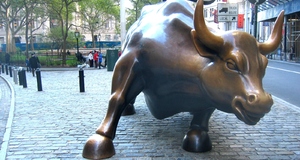Featured Article:The Spanish Financial Crisis: Economic Reforms and the Export-Led Recovery
By
2014, Vol. 6 No. 10 | pg. 1/4 | »
IN THIS ARTICLE
KEYWORDS
OverviewIn July 2012, Spain's unemployment rate was above 20%, its stock market was at its lowest point in a decade, and the government was borrowing at a rate of 7.6%. With domestic demand depleted and no sign of recovery in sight, President Mariano Rajoy and the European Union decided to enact reforms to renew credibility in Spain and increase exports from the country. These reforms can be broken down into three main categories: financial market reforms, fiscal measures, and labor market reforms. While financial market and fiscal measures restored foreign investors' confidence in Spain, driving down interest rates by over 400 basis points and increasing Spain's stock market to record levels, the labor market reforms decreased unit labor costs by nearly 4%. Since implementing the reforms, Spain's exports increased by an average of over 4% at the same time as exports in Italy and France increased by less than 2%. Although not conclusive, comparing Spain to neighboring countries suggests that the country has been largely successful in driving an export-led recovery.Many risk factors remain that could still derail the recovery, especially the threats that the unpopular Rajoy administration will not win re-election and that Spain's competitors, France and Italy, could institute similar reforms.
Setting the Stage for Spain's Financial CrisisThe year 2008 marked the 30th year of Spain's constitutional monarchy, leaving behind a dark past. From 1939 to 1975 dictator Francisco Franco ruled Spain, during which time Franco propagated the message that Spain was the monarchy that defended Catholicism above all else. Any anti-government, anti-Catholic, or anti-Spanish expression was suppressed, and las dos Españas (the two Spains) evolved: one that held strong traditional and religious ties, and one that hoped to break free from the oppression of the dictatorship.1 In 1978, three years after the death of Franco, the Spanish people came together to create a constitutional monarchy. They named King Juan Carlos head of state and proclaimed themselves a secular nation with seventeen autonomous regions, ranging from Galicia in the northwest to Andalusia in the south. The government created by the 1978 constitution remains in place today, and presides over a country of 46 million people with a GDP of $1.3 trillion, making it the fourth largest economy in Europe. When the housing bubble popped, Spain was thrown into a crisis with over 25% unemployment, a depressed tax base, and increased government entitlement spending. Spanish CultureToday, Spanish culture is first and foremost distinguished by its seventeen autonomous regions. During the evolution of civilization in the Iberian Peninsula, cities sprang up along the coastlines with little interaction. The Pyrenees mountain range isolated Spain from France to the north, other mountain ranges made for a natural border in the interior of Spain, and the sea served as a border from the exterior. Distinct cultures arose based on the various climates and inhabitants of the different cities, including a Catalán culture surrounding Barcelona in the northeast, a Gallego culture in the northwest, an Andaluciano culture to the south, and a Vasco culture in the north. The overarching cultural differences from hundreds of years ago persist today, as do tensions between the cities. The regional differences that have developed over the years create fragmented political and economic systems that have caused local budgets to balloon and the grasp of the central government to weaken.2 Another key cultural aspect of Spain today is the rise of immigration. The population of Spain grew from 40 million to 45 million from 2000 to 2008 while the birth rate of Spanish women was only 1.6, below the rate of 2.1 that is necessary to maintain a population. Further, from 1999 to 2007, the Spanish economy created one third of all new jobs in the European Union. The majority of the jobs were low-paying, and people began flooding in from, primarily, North Africa. Tensions rose as the immigrants were willing to work for less money than Spaniards, and set the stage for racial conflict when the economy took a turn for the worse in 2008. Immigration has changed the landscape of Spain, creating an economy with more low paying jobs and a larger base of low-income residents expecting social services.3 According to Geert Hofstede, the most distinctive aspect of Spanish culture is the desire to avoid uncertainty. For example, 75% of young people in Spain said they would like to work in civil service (often thought of as a 'job for life'), compared to only 17% of young people in the United States.4 This uncertainty avoidance has led to a society that looks harshly upon failure, and that, according to some, lacks an inherent entrepreneurial spirit. While many say that entrepreneurship is currently on the rise in Spain,5 other data suggests otherwise. The number of business starts has dropped steadily, from 410,975 in 2008 to 332,229 in 2012. Furthermore, the median capital investment to an entrepreneur was €18,000 in 2012, compared with €30,000 in 2011.6 Despite the hope that entrepreneurs emerge out of necessity, it seems unlikely that Spain would be able to turn around the recession through new business starts in the short term. The Housing CrisisIn 2007 Spain's growth prospects looked promising as investment poured into the real estate sector, with house prices rising 250% over the preceeding 5 years.7 Moreover, GDP was on an upward trend, growing by at least 3% in each of the previous 5 years. Yet, a combination of a housing bubble, various structural problems and the global financial crisis pushed Spain into its deepest recession of the democratic era. When Spain joined the Eurozone in 2002, it was relatively less developed than the rest of the currency union. The lack of development meant higher yield projects were available in Spain, and with easier mobility of capital and people, investments started flowing into Spain. As a result, its capital account surplus rose from $83 billion in 2005 to $155 billion in 2008. Northern Europe, and specifically Germany, became an export machine, and invested much of its current account surplus in Spain. Consequently, Spain continuously ran a current account deficit, reaching 10% of GDP by 2007.8 Much of the investment that came into Spain went into real estate. Housing investment in Spain sat at 9.5% of GDP in 2007,9 twice that of the European average. Further, in the year preceding the crisis, there were more housing starts in Spain (population 45 million) than in Germany, France, and Italy combined (population 204 million).10 The pattern of home ownership in Spain was also distinct from other European countries, in part because of the availability 40- and 50-year mortgages and likely also related to cultural factors in Spain. In Spain, the homeownership rate was over 80% in 2011 compared to a rate of about 65% in the UK and under 45% in Germany. Additionally, in 2004 Spain had 160 secondary houses per 1,000 residents, compared with the EU average of 75.11 The recent financial struggles of the country have obviously dispelled the myth that Spanish real estate would never decrease in value. The bubble hit a breaking point in the beginning of 2008, after which housing prices fell by 37% on avergage.12 At the same time, new construction came nearly to a halt. The construction sector, which made up 17% of the economy in 2007,13 fell precipitously as income and wealth around the country dissipated. In the span of one year, a country highly dependent on domestic demand lost two million jobs and fell into crisis. Moreover, non-financial corporations and households had increased debt in a time of low-cost financing. With the introduction of the Euro, Spain's interest rate converged to that of Germany's, from a 100 basis point spread in 1997 to virtually even in 2005.14 However, the risks were not properly priced. Further, non-financial companies held nearly 220% of private debt to GDP, compared to 150% in France and 122% in Italy.15 Suddenly, with the loss of wealth and incomes, the private sector of the country defaulted on many of its loans. The housing bubble popped, throwing Spain into a crisis with over 25% unemployment, a depressed tax base, and increased government entitlement spending. Structure of the Spanish EconomyMuch of Spain's inability to cope with the housing crisis can be linked to the structure of the Spanish economy. The labor market was rife with archaic laws and inflexibility. While the economy lost 2 million jobs between 2008 and 2009, compensation level per employee actually increased 6%.16 Collective bargaining agreements prevented reasonable negotiation and labor unions refused lower wages. The inability to change costs and prices only led companies to lay off more employees, and worsened the economic situation. Further, much of Spain's banking system was unregulated and inefficient. Regional politicians ran and regulated 45 cajas (savings banks). The cajas held half of all banking assets in Spain and were not required to divulge a history of repayment, loan to value ratios, or collateral on loans to the central bank of Spain. In 2009, the cajas – effectively a "shadow banking" system – held 56% of all Spanish mortgages. Additionally, the payments on the mortgage loans made up a significant portion of the cajas revenue, approaching a ratio of 20% of all assets.17 The combination of the availability of cheap financing and the fact that the cajas did not have to disclose loan information to the government led to excessively risky and unregulated lending. When the bubble burst, almost 5% of all mortgages held by the cajas were underwater18 and financial institutions across the country were unable to extend new credit within the country. Finally, the structure of the Eurozone did not allow Spain to address the downturn effectively. When Spain agreed to join the monetary union, it also agreed to give up control over its monetary policy and its ability to control interest rates. Domestic demand plummeted in the aftermath of the housing bubble, and although Spain might have benefited from devaluing its currency to make exports more attractive, its participation in the Eurozone made such a contingency an impossiblity. At the same time, because Spain could not devalue its currency, it was also unable to lower its interest rates to free up credit and encourage invesment. With no monetary policy power, nor the ability to lower wages, Spain had few tools to fight the declining state of the economy. With no monetary policy power, nor the ability to lower wages, Spain had few tools to fight the declining state of the economy. As a result, Spain fell into a deep recession. The global financial crisis merely exacerbated its existing problems. On top of declining domestic demand, global demand for Spanish products decreased as well. Previously, over 60% of all Spanish exports went to countries in the European Union, the area hit hardest by the financial crisis.19 With the European Union in general financial crisis, the Eurozone's intransigence in its policies towards the periphery, and the problems that existed inside Spain all compounding to form a dire financial picture, internal structural reforms became necessary.Continued on Next Page » Suggested Reading from Inquiries Journal
Inquiries Journal provides undergraduate and graduate students around the world a platform for the wide dissemination of academic work over a range of core disciplines. Representing the work of students from hundreds of institutions around the globe, Inquiries Journal's large database of academic articles is completely free. Learn more | Blog | Submit Latest in Economics |















